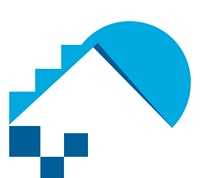WASHINGTON, Sept. 25 /PRNewswire-USNewswire/ — Existing-home sales fell in August when mortgage availability problems were peaking, according to the National Association of Realtors(R).
Total existing-home sales — including single-family, townhomes, condominiums and co-ops — were down 4.3 percent to a seasonally adjusted annual rate (1) of 5.50 million units in August from a level of 5.75 million in July, and are 12.8 percent below the 6.31 million-unit pace in August 2006.
Lawrence Yun, NAR senior economist, expected the decline. “The unusual disruptions in the mortgage market, including a significant rise in jumbo loan rates, resulted in a fairly high number of postponed or cancelled sales, with many buyers having to search for other financing when loan commitments fell through,” he said. “Lower sales contributed to a buildup of unsold inventory.”
Yun expects similar results for home sales in September. “Once we get through these disruptions, we'll get a better sense of where the actual market is in late fall as conditions begin to normalize,” he said.
Total housing inventory rose 0.4 percent at the end of August to 4.58 million existing homes available for sale, which represents a 10.0-month supply (3) at the current sales pace, up from a 9.5-month supply in July.
NAR President Pat V. Combs, from Grand Rapids, Mich., and vice president of Coldwell Banker-AJS-Schmidt, said the good news is that the mortgage picture is improving. “Mortgage interest rates have been declining and loan availability is improving,” she said. “Movements to enhance the FHA loan program and to raise the limits for conventional financing could provide additional relief, and it looks like the worst of the mortgage availability problem is behind us.
“The abundant choice of homes is permitting buyers to better negotiate price and terms. There are good opportunities in the market now, especially for first-time buyers.”
The national median existing-home price (2) for all housing types was $224,500 in August, up 0.2 percent from August 2006 when the median was $224,000. The median is a typical market price where half of the homes sold for more and half sold for less.
“Price gains in the Northeast and Midwest were largely offset by a decline in the West, while the median existing-home price in the South was down slightly, demonstrating that all real estate is local,” Combs said.
According to Freddie Mac, the national average commitment rate for a 30- year, conventional, fixed-rate mortgage was 6.57 percent in August, down from 6.70 percent in July; the rate was 6.52 percent in August 2006. Last week, Freddie Mac reported the 30-year fixed rate was down to 6.34 percent.
Single-family home sales fell 3.8 percent to a seasonally adjusted annual rate of 4.81 million in August from a pace of 5.00 million in July, and are 13.0 percent below 5.53 million-unit level in August 2006. The median existing single-family home price was $223,900 in August, which is essentially even with a year ago.
Existing condominium and co-op sales dropped 8.0 percent to a seasonally adjusted annual rate of 690,000 units in August from 750,000 in July, and are 11.7 percent lower than the 781,000-unit pace a year ago. The median existing condo price (4) was $228,500 in August, up 2.1 percent from August 2006.
Regionally, existing-home sales in the Northeast slipped 2.0 percent in August to an annual pace of 1.00 million, and are 5.7 percent below a year ago. The median price in the Northeast was $282,300, up 3.6 percent from August 2006.
Existing-home sales in the South eased by 2.7 percent to a level of 2.20 million in August, and are 12.7 percent lower than August 2006. The median existing-home price in the South was $183,500, down 0.7 percent from a year ago.
Existing-home sales in the Midwest fell 5.2 percent to an annual rate of 1.28 million in August, and are 10.5 percent below a year ago. The median price in the Midwest was $177,100, up 3.1 percent from August 2006.
Existing-home sales in the West dropped 9.8 percent in August to a level of 1.01 million, and are 21.7 percent below August 2006. The median price in the West was $332,300, which is 3.8 percent below a year ago.
The National Association of Realtors(R), “The Voice for Real Estate,” is America's largest trade association, representing more than 1.3 million members involved in all aspects of the residential and commercial real estate industries.
(1) The annual rate for a particular month represents what the total number of actual sales for a year would be if the relative pace for that month were maintained for 12 consecutive months. Seasonally adjusted annual rates are used in reporting monthly data to factor out seasonal variations in resale activity. For example, home sales volume is normally higher in the summer than in the winter, primarily because of differences in the weather and family buying patterns. However, seasonal factors cannot compensate for abnormal weather patterns.
Existing-home sales, which include single-family, townhomes, condominiums and co-ops, are based on transaction closings. This differs from the U.S. Census Bureau's series on new single-family home sales, which are based on contracts or the acceptance of a deposit. Because of these differences, it is not uncommon for each series to move in different directions in the same month. In addition, existing-home sales, which generally account for 85 percent of total home sales, are based on a much larger sample — nearly 40 percent of multiple listing service data each month – and typically are not subject to large prior-month revisions.
(2) The only valid comparisons for median prices are with the same period a year earlier due to the seasonality in buying patterns. Month-to-month comparisons do not compensate for seasonal changes, especially for the timing of family buying patterns. Changes in the geographic composition of sales can distort median price data.
Year-ago median and mean prices sometimes are revised in an automated process if more data is received than was originally reported.
(3) Total inventory and month's supply data are available back through 1999, while single-family inventory and month's supply are available back to 1982. Comparisons of current total month's supply with single-family data prior to 1999 are broadly valid because single-family homes accounted for more than nine out of 10 purchases in the earlier timeframe (e.g., condos were 9.5 percent of transactions in 1998, 8.5 percent in 1990 and only 6.1 percent in 1982).
(4) Because there is a concentration of condos in high-cost metro areas, the national median condo price can be higher than the median single-family price. In a given market area, condos typically cost less than single-family homes.
Existing-home sales for September will be released October 24. The next Pending Home Sales Index will be on October 2 and the forecast will be revised October 10.
Information about NAR is available at http://www.realtor.org. This and other news releases are posted in the News Media section. Statistical data in this release, other tables and surveys also may be found by clicking on Research.
REALTOR (R) is a registered collective membership mark which may be used only by real estate professionals who are members of the NATIONAL ASSOCIATION OF REALTORS(R) and subscribe to its strict Code of Ethics. Not all real estate agents are REALTORS(R). All REALTORS(R) are members of NAR.
SOURCE National Association of Realtors
© 2007 PR Newswire. All Rights Reserved.

















